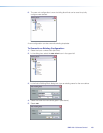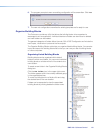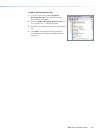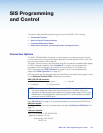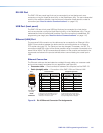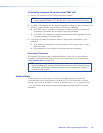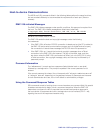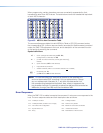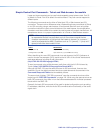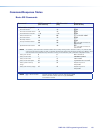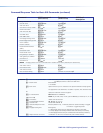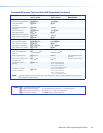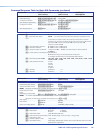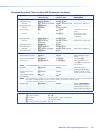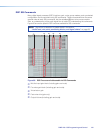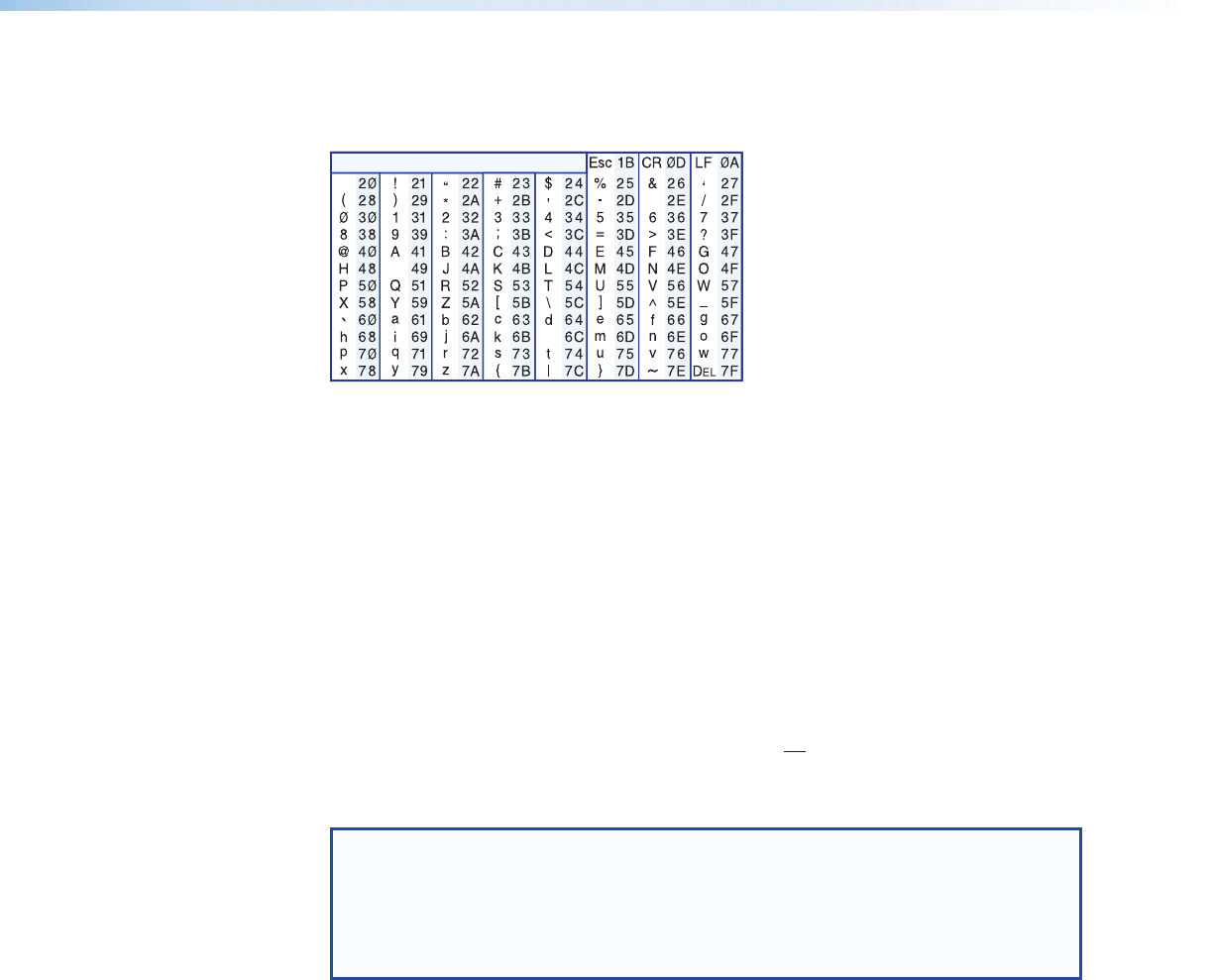
When programming, certain characters are more conveniently represented by their
hexadecimal rather than ASCII values. The table below shows the hexadecimal equivalent
of each ASCII character:
•
Space
l
I
ASCII to HEX Conversion Table
Figure 65. ASCII to Hex Conversion Table
The command/response tables list valid ASCII (for Telnet or RS-232) command codes,
the corresponding URL (uniform resource locator) encoded (for Web browsers) command
codes, the DMP128 responses to the host, and a description of the command function
or the results of executing the command.
Symbol definitions
]
=
CR/LF (carriage return/line feed) (hex
0D 0A)
}
=
Carriage return (no line feed, hex
0D)
(for URL-encoded commands, use the pipe character,
|
,
instead)
•
=
Space character (
%20 for web browser)
|
=
Pipe (vertical bar) character
*
=
Asterisk character (which is a command character, not a variable)
E
=
Escape key (hex
1B)
(use W instead of Esc for Web browsers)
NOTE:
For Web encoding only: data will be directed to the specified port
and must be encoded (URL encoding) if it is non-alphanumeric. Change
any non-alphanumeric character (%, +,
}
) within the data section into
the corresponding hexadecimal equivalent, %xx, where xx represents the
two-character hex byte. For example, a space (hex: 20) would be encoded as
%20 and a plus sign (hex: 2B) would be encoded as %2B.
Error Responses
When the DMP128 is unable to execute the command, it returns an error response to the
host. The error response codes and their descriptions are as follows:
E12 -
Invalid port number
E24 -
Privilege violation
E13 -
Invalid parameter (number is out of range)
E25 -
Device is not present
E14 -
Not valid for this configuration
E26 -
Maximum connections exceeded
E17 -
System timed out
E27 -
Invalid event number
E22 -
Busy
E28 -
Bad filename or file not found
DMP128 • SIS Programming and Control 117



